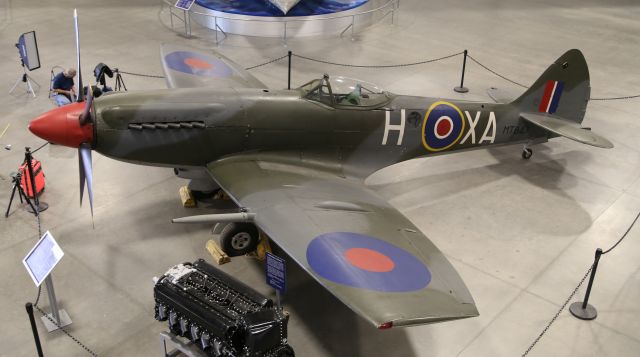 |
|
SUPERMARINE Spitfire (TCX847)
At Pima Air & Space Museum, Tucson, AZ, 21 Apr 18. More info from PASM website:'
Manufacturer: SUPERMARINE
Markings: Royal Air Force
Designation: FR. XIVe
Serial Number: MT847
SPITFIRE
The Spitfire is widely regarded as the best British fighter of World War II and was the only British designed fighter to remain in production for the entire length of the war. Design of the Spitfire began in 1934 with the first prototype flying the following year. The Spitfire entered service in 1938 just one year before World War II began. The Spitfire proved to be a very adaptable design with versions dedicated to everything from short range interceptors to high speed photo reconnaissance.
The Mark XIV included many changes to the original Spitfire design. Most notable are the change from the Rolls Royce Merlin engine to the larger and more powerful Rolls Royce Griffon engine which required a redesign of the aircraft’s nose and the use of a five-bladed propeller. The fuselage was further redesigned to incorporate a bubble type canopy that gave much greater visibility for the pilot. The “FR” or fighter-reconnaissance version also added a fuselage mounted camera located behind the cockpit that could be pointed out a window on either side of the plane. Finally, the famous elliptical wing was redesigned with the wing tips shortened and squared off to improve the aircraft’s performance at lower altitudes.
Comments
|
REGISTRO DE ATIVIDADE
Deseja um histórico completo para TCX847 a partir de 1998? Compre agora. Comece dentro de uma hora.
|
| Data | Aeronave | Origem | Destino | Partida | Chegada | Duração |
|---|---|---|---|---|---|---|
| No Recent History Data | ||||||
| Usuários básicos (o registro é gratuito e fácil!) podem visualizar o histórico de 3 months. Registrar | ||||||


Please log in or register to post a comment.